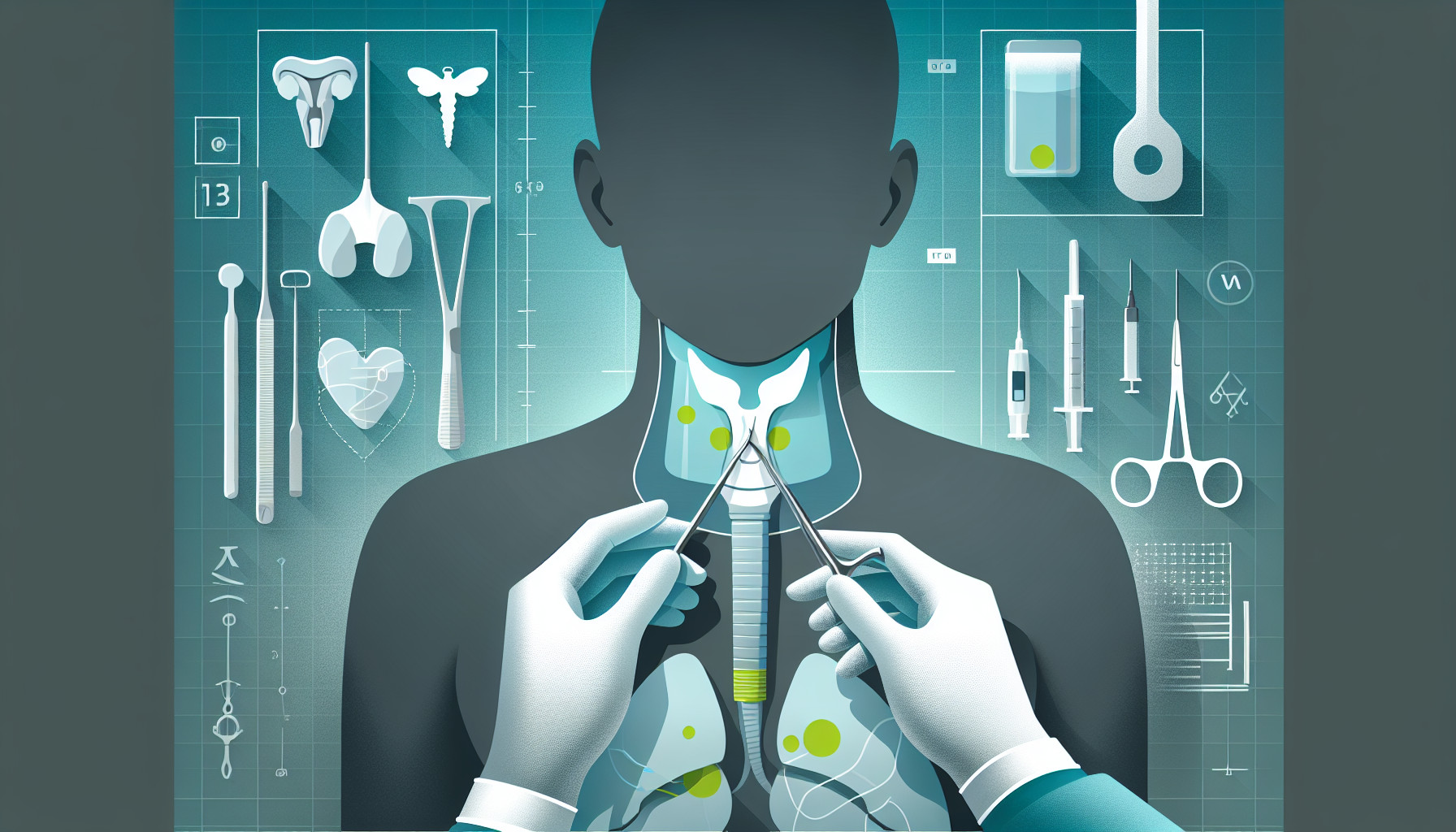Our Summary
This research paper discusses a surgical method called ‘gasless endoscopic thyroidectomy’. This is a procedure to remove the thyroid gland without using any gas to create space for the operation. This approach helps avoid possible complications that could come from using gas. It also offers several benefits such as less scarring, better visibility for the surgeon, and the ability for the patient to move their neck normally after surgery.
The goal of the study is to gather and analyze all the current techniques used for this gasless surgery. The paper also lists the pros and cons of each method. The intention is to provide a helpful guide for surgeons to choose the most appropriate technique in their medical practice.
FAQs
- What is gasless endoscopic thyroidectomy and how does it work?
- What are the advantages and disadvantages of gasless endoscopic thyroidectomy?
- Why is the gasless endoscopic thyroidectomy method widely adopted in clinical settings?
Doctor’s Tip
One helpful tip a doctor might tell a patient about thyroidectomy is to follow post-operative care instructions carefully, including taking prescribed medications, attending follow-up appointments, and avoiding strenuous activities that could strain the neck muscles. It is also important to communicate any concerns or unusual symptoms to your healthcare provider promptly.
Suitable For
Patients who may be recommended for thyroidectomy include those with thyroid cancer, large goiters causing difficulty breathing or swallowing, hyperthyroidism that does not respond to other treatments, or suspicious nodules on the thyroid gland. Additionally, patients with thyroid nodules that are causing symptoms such as pain, pressure, or difficulty swallowing may also be candidates for thyroidectomy. Ultimately, the decision to recommend thyroidectomy will depend on the individual patient’s specific condition and needs, as well as the recommendations of their healthcare provider.
Timeline
Before thyroidectomy:
- Patient consultation and evaluation by an endocrinologist or surgeon to determine the necessity for thyroid surgery.
- Pre-operative testing, such as blood work, imaging studies, and thyroid function tests.
- Discussion of the procedure, risks, and potential outcomes with the patient.
- Consent for surgery obtained from the patient.
- Pre-operative preparation, such as fasting and medication adjustments.
After thyroidectomy:
- Patient undergoes general anesthesia and the surgical procedure is performed.
- Post-operative monitoring in the recovery room for vital signs and potential complications.
- Pain management and monitoring of the surgical site for bleeding or infection.
- Education on post-operative care, such as wound care and restrictions on activities.
- Follow-up appointments with the surgeon for monitoring of thyroid function and overall health.
- Potential long-term management with thyroid hormone replacement therapy if the entire thyroid gland is removed.
What to Ask Your Doctor
- What are the potential complications associated with gasless endoscopic thyroidectomy compared to traditional thyroidectomy methods?
- How does gasless endoscopic thyroidectomy maintain neck functionality compared to other techniques?
- What is the level of scarring typically associated with gasless endoscopic thyroidectomy?
- How does gasless endoscopic thyroidectomy enhance visibility of the surgical field compared to other methods?
- Are there any specific qualifications or training required for a surgeon to perform gasless endoscopic thyroidectomy?
- What are the advantages of gasless endoscopic thyroidectomy over traditional thyroidectomy methods?
- What are the disadvantages of gasless endoscopic thyroidectomy that I should be aware of?
- How long is the recovery time expected to be after undergoing gasless endoscopic thyroidectomy?
- What are the success rates of gasless endoscopic thyroidectomy compared to traditional methods?
- Are there any specific post-operative care instructions I should follow after undergoing gasless endoscopic thyroidectomy?
Reference
Authors: Cheng X, Ding X, Wang S, Li S, Zhang H. Journal: Front Endocrinol (Lausanne). 2024 Nov 11;15:1466837. doi: 10.3389/fendo.2024.1466837. eCollection 2024. PMID: 39588333
